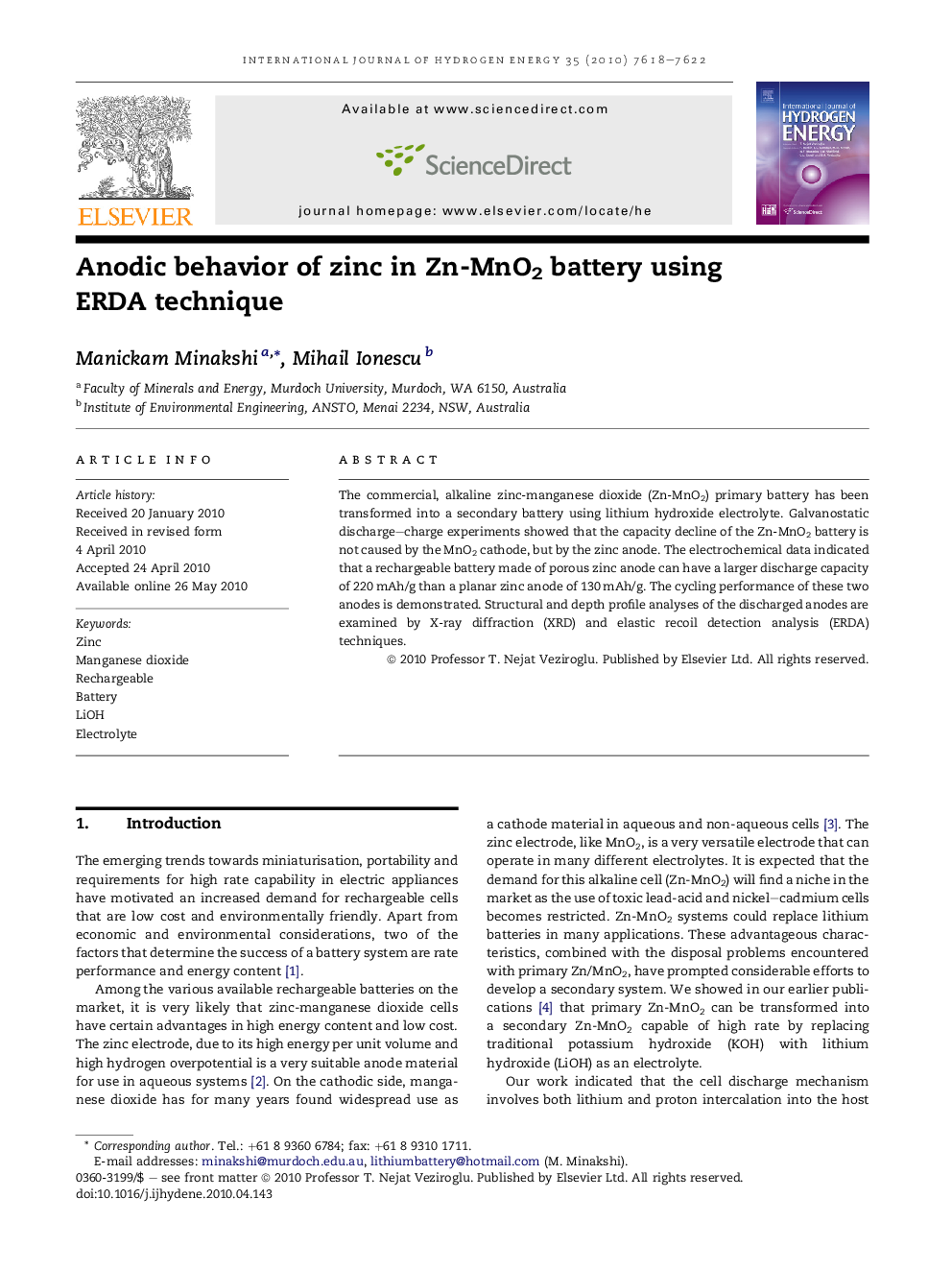| Article ID | Journal | Published Year | Pages | File Type |
|---|---|---|---|---|
| 1272804 | International Journal of Hydrogen Energy | 2010 | 5 Pages |
Abstract
The commercial, alkaline zinc-manganese dioxide (Zn-MnO2) primary battery has been transformed into a secondary battery using lithium hydroxide electrolyte. Galvanostatic discharge–charge experiments showed that the capacity decline of the Zn-MnO2 battery is not caused by the MnO2 cathode, but by the zinc anode. The electrochemical data indicated that a rechargeable battery made of porous zinc anode can have a larger discharge capacity of 220 mAh/g than a planar zinc anode of 130 mAh/g. The cycling performance of these two anodes is demonstrated. Structural and depth profile analyses of the discharged anodes are examined by X-ray diffraction (XRD) and elastic recoil detection analysis (ERDA) techniques.
Related Topics
Physical Sciences and Engineering
Chemistry
Electrochemistry
Authors
Manickam Minakshi, Mihail Ionescu,
